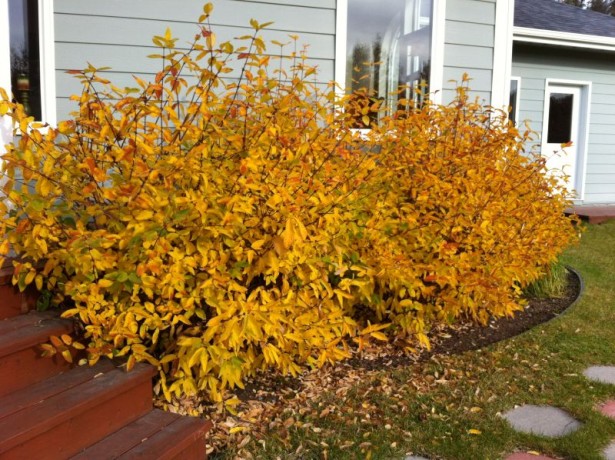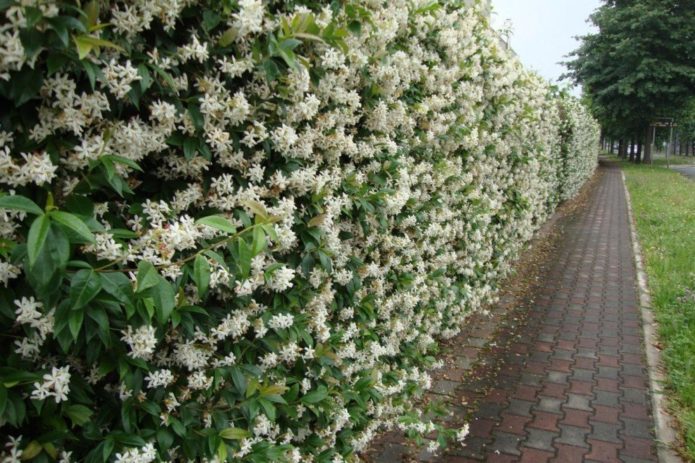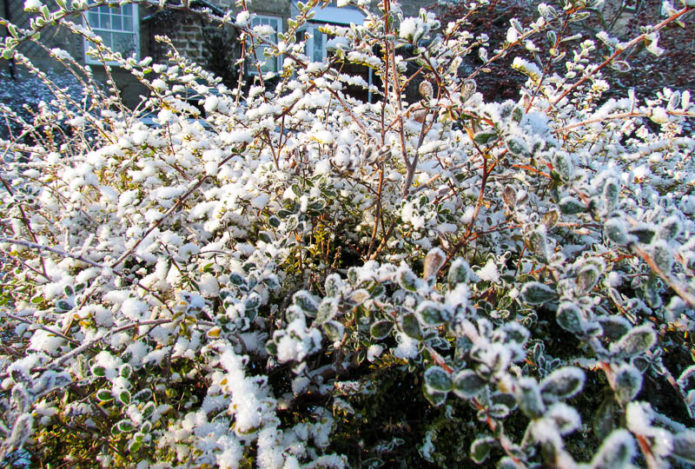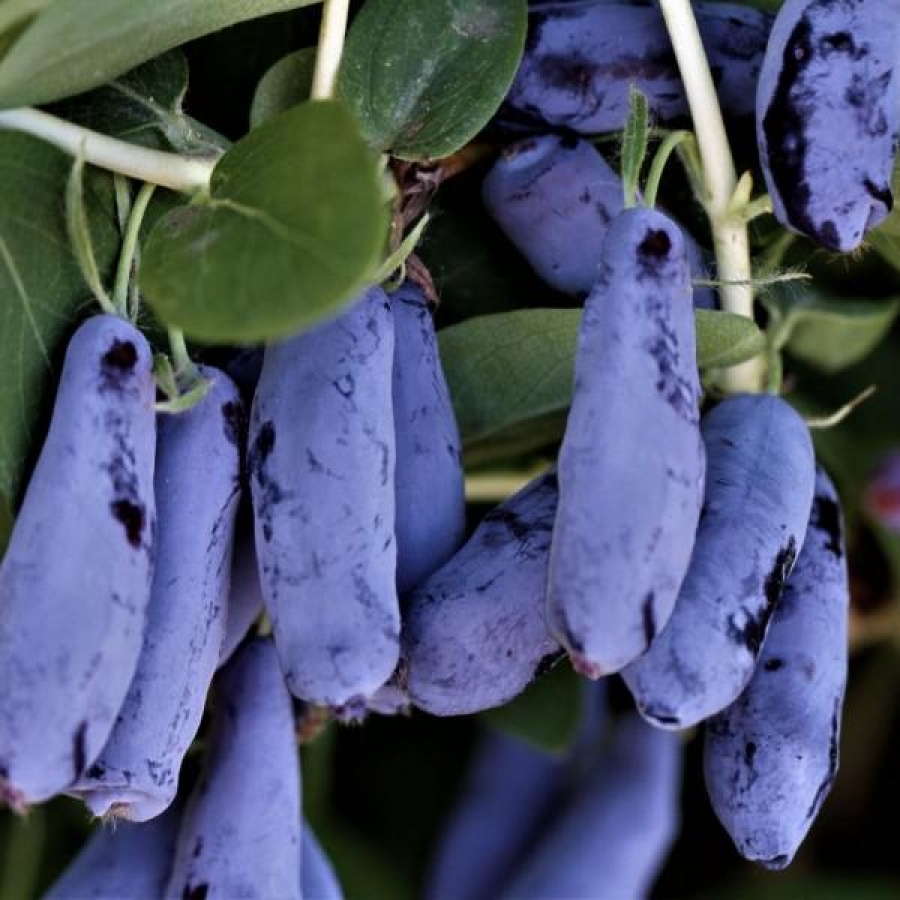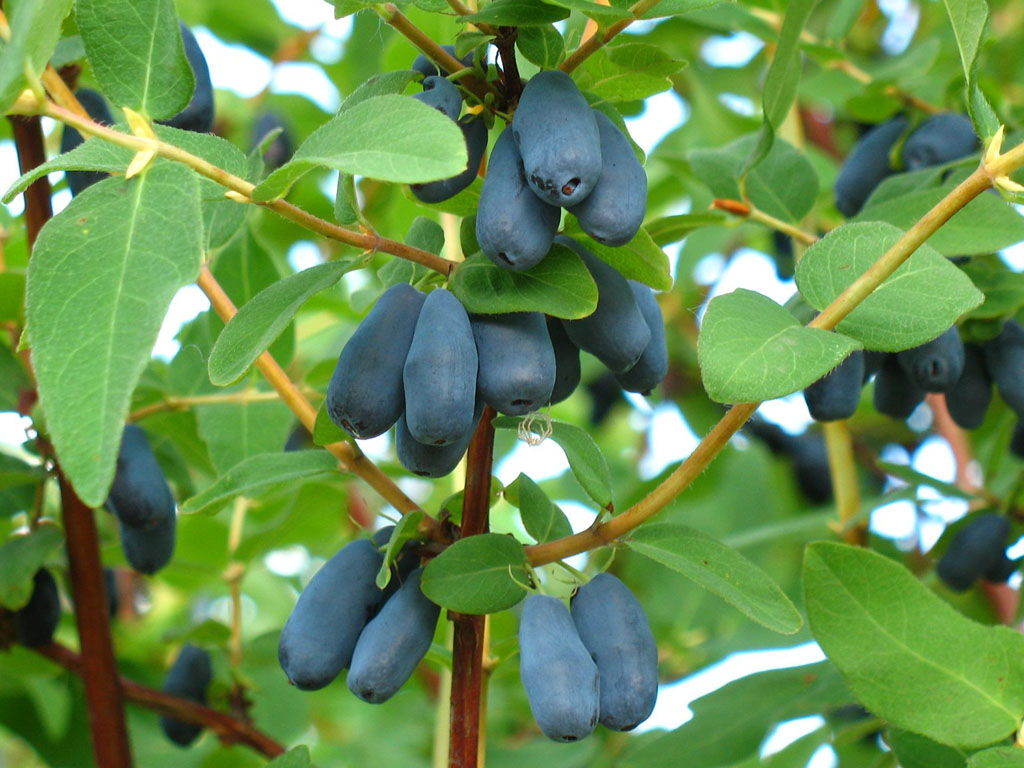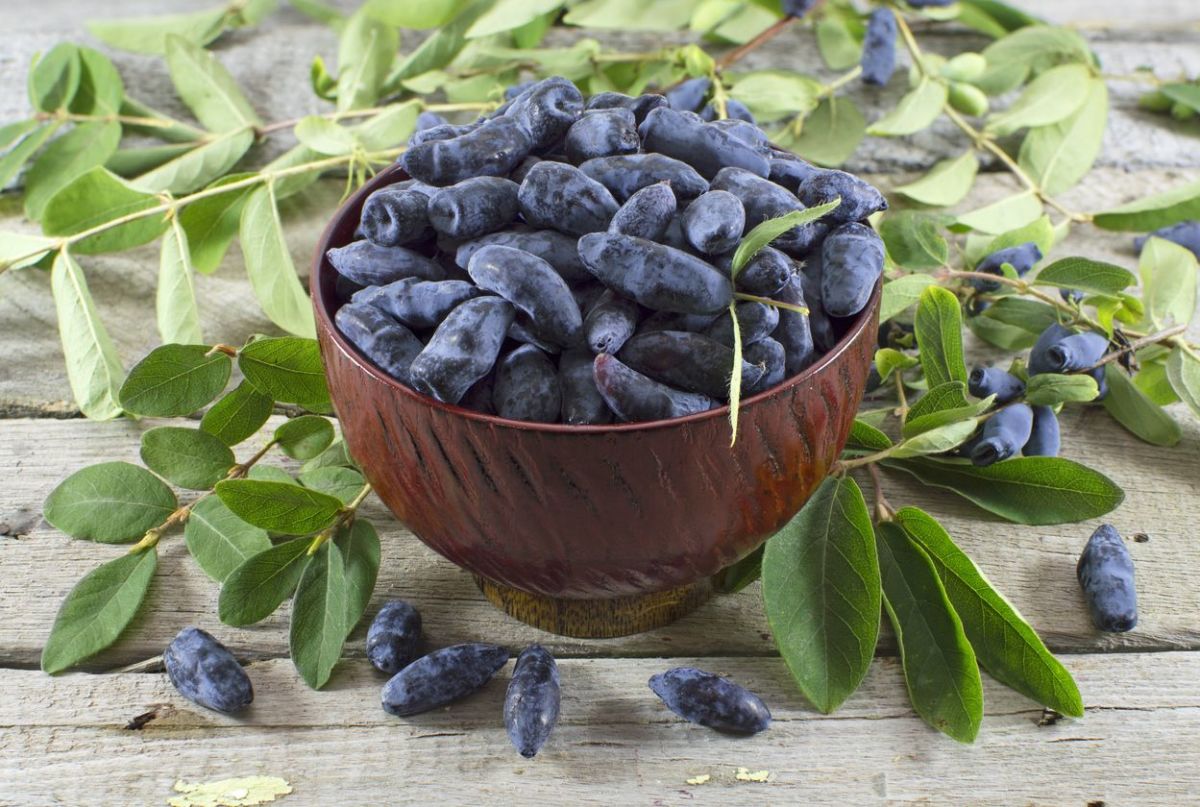Caring for honeysuckle in the fall and preparing the plant for winter is not too difficult. It is a popular upright, climbing or creeping shrub, often cultivated in backyard horticulture. The berries of some types of horticultural crops are actively used for food purposes, therefore, the quality and quantity of the harvest in the next season directly depends on the competent preparation of the plant for winter.
What care does honeysuckle need in autumn
Caring for the planting of honeysuckle after the end of the harvest consists in performing several simple standard measures. Only proper preparation for winter allows the plant to overwinter safely, and also ensures abundant flowering and fruiting in the future.
The main work on caring for a plant in the fall includes:
- irrigation activities;
- pruning of sanitary or anti-aging type;
- feeding and improving the soil composition;
- treatment against wintering pests and pathogenic microflora.
Among other things, a characteristic feature of all types of honeysuckle is the rather early awakening of the plant in spring. Therefore, transplanting to another place or dividing the bush is carried out precisely in the fall, before the onset of severe frosts.
The shrub loves moisture, therefore, if the fall is dry, the honeysuckle must be watered regularly.
Procedures for preparing honeysuckle for winter
Poor yields are the result of an unprepared plant overwintering or a violation of the basics of proper garden crop care. To minimize the risk of berry bushes freezing, you should pay special attention to the methods and timing of the autumn preparation of the plant for frost. All freezing varieties must be covered with a layer of mulching material.
Autumn pruning
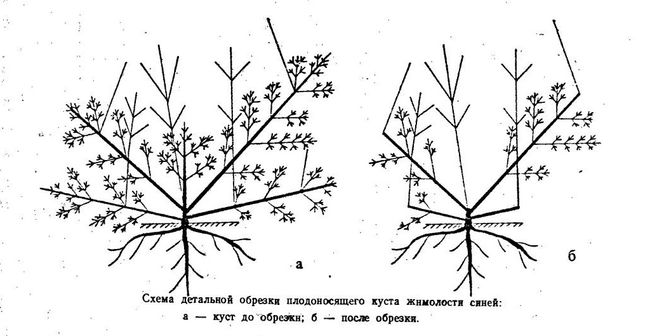
Inexperienced gardeners need to study the diagram and mark the branches that should be removed before pruning the honeysuckle.
Active branching of honeysuckle requires regular pruning. It relieves the culture of damaged and too old branches, strengthens the plant against frost, and also significantly increases productivity.
The first autumn pruning is carried out in the fifth year after planting, and cultivation is carried out only on eight-year-old bushes. Young plants should be systematically freed from thickening growth. Only clean and sharp garden shears or pruners are used for the procedure.
Garden honeysuckle grows rather slowly, so you should be careful when pruning, take into account the fragility of the branches and adhere to the correct scheme.
Autumn feeding
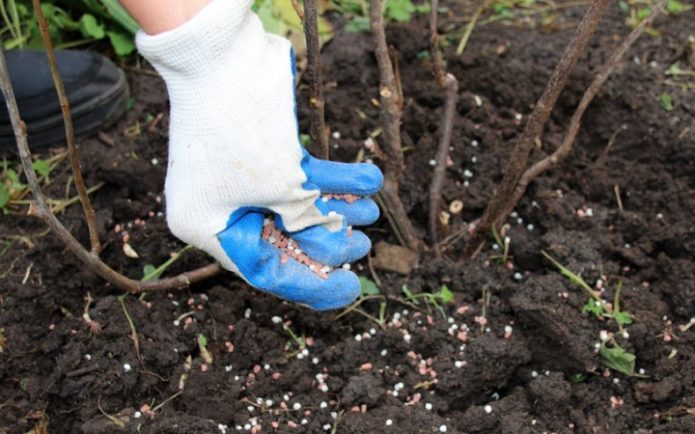
If the fruits of honeysuckle are edible, in the fall it needs to be fed with potassium - then the berries will be sweet and tasty.
The best option for feeding honeysuckle is represented by organic fertilizers, which make the soil more fertile and saturated with all bacteria important for the normal development of the plant. The most common organic fertilizers are humus and compost, applied every 3-4 years at the rate of one bucket for each young bush.
Immediately before the onset of a strong autumn cold snap, the decorative berry culture should be fed with phosphorus-potassium fertilizers. A good result is obtained by using ordinary wood ash (0.5 l), superphosphate (60 g) and potassium salt (40 g). Fertilizers of this type must be applied directly to the root zone of the garden shrub.
In the fall, you cannot use fertilizing with a large amount of nitrogen and fresh manure.
Autumn shelter
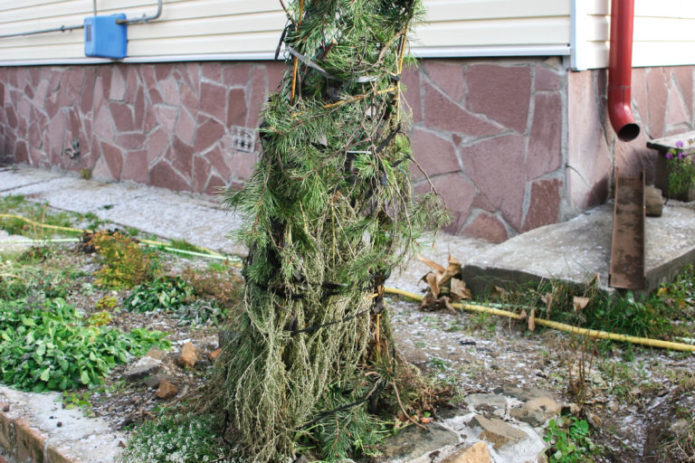
To protect the honeysuckle, the shoots are collected in a bunch, covered with spruce or pine branches and tied
To make the autumn shelter as effective as possible and protect the shrubs from severe winter frosts, it is recommended to give preference to natural materials that allow air to pass through well enough, but prevent the penetration of cold to the branches and roots. Curly aerial shoots should be untied from the supports and collected in a not too dense bunch.
A rather thick layer of dry peat is laid under the bushes, after which the branches are collected and abundantly sprinkled with sawdust or spruce branches. In winters with little snow, ornamental berry bushes are necessarily "covered" with snow. It is very important not to allow too much moisture to cause the bushes to dry out.
For protection from birds and rodents, it is allowed to use special nets and poisoned baits.
Care taking into account the region
Depending on the characteristics of the selected variety and the weather conditions in the growing region, there are differences in the preparation of honeysuckle for winter frosts. The average thickness of the mulch layer must be selected taking into account the climate and cold resistance of the crop. In any case, feeding and pruning are performed about a month before the onset of severe frosts.
The middle lane and the Volga region
Frost-resistant varieties, most often cultivated in the Moscow region, do not require the use of a special winter shelter. Any mulching materials are used only to protect climbing vines or ornamental varieties of berry crops that do not have sufficient frost resistance.
Territory of the Urals

In the Urals, honeysuckle can be sheltered at will, but it is worth tying the shoots together in any case
Before the onset of frost, only insufficiently winter-hardy varieties of berry crops are sheltered. Throughout the entire cold period, it is very important to control the level of snow mass over garden plantings and regularly pour in a decreasing layer of natural insulation.
Territory of Siberia
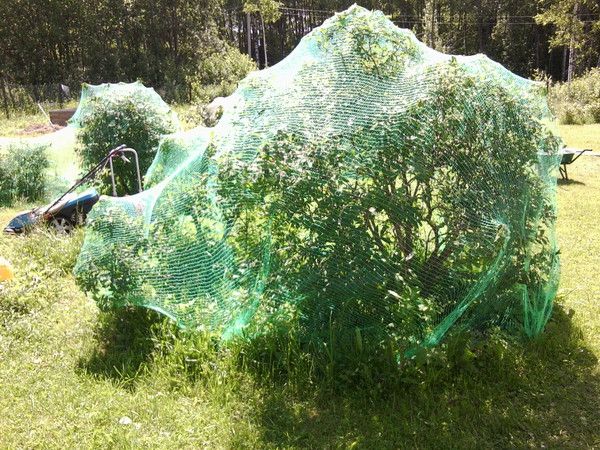
In Siberia, it is imperative to cover the honeysuckle with a net, since hungry animals can harm the bush
In the northernmost regions, only the honeysuckle varieties most adapted to the cold climate are cultivated, and a large amount of snow mass presupposes protection of the aboveground part of the plant from breaking off. To this end, the branches of the plant are neatly tied, after which they bend down to the ground and must be covered with a net.
Video: How to prepare honeysuckle honeysuckle for winter
Honeysuckle is a healthy and unpretentious crop, but a rich harvest of valuable and tasty berries can be obtained only in conditions of proper and timely care. You should not neglect top dressing, watering and pruning, and special attention is paid to competent autumn preparation of berry bushes for winter.
